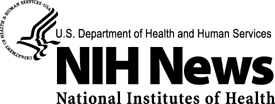
NIH to reduce significantly the use of chimpanzees in research
NIH plans to retain but not breed up to 50 chimpanzees for future biomedical research. The chimpanzees that will remain available for research will be selected based on research projects that meet the IOM’s principles and criteria for NIH funding. The chimpanzees designated for retirement could eventually join more than 150 other chimpanzees already in the Federal Sanctuary System. The Federal Sanctuary System was established in 2002 by the Chimpanzee Health Improvement, Maintenance and Protection (CHIMP) Act
![]() and Chimp Haven operates the Federal Sanctuary System, which is overseen by NIH.
and Chimp Haven operates the Federal Sanctuary System, which is overseen by NIH.
“Americans have benefitted greatly from the chimpanzees’ service to biomedical research, but new scientific methods and technologies have rendered their use in research largely unnecessary,” said Dr. Collins. “Their likeness to humans has made them uniquely valuable for certain types of research, but also demands greater justification for their use. After extensive consideration with the expert guidance of many, I am confident that greatly reducing their use in biomedical research is scientifically sound and the right thing to do.”
In accepting the recommendations, NIH plans to:

Pumpkin, a 24-year-old chimpanzee at the Alamogordo Primate Facility, N.M., loves coconuts and kiddie swimming pools. APF is a chimpanzee reserve where no research is conducted.
- retain but not breed a small fraction of chimpanzees for future research that meets the IOM principles and criteria
- provide ethologically appropriate facilities (i.e., as would occur in their natural environment) for those chimpanzees as defined by NIH based on the advisory council recommendations and with space requirements yet to be determined
- establish a review panel to consider research projects proposing the use of chimpanzees with the IOM principles and criteria after projects have cleared the NIH peer review process
- wind down research projects using NIH-owned or -supported chimpanzees that do not meet the IOM principles and criteria in a way that preserves the research and minimizes the impact on the animals
- retire the majority of the NIH-owned chimpanzees deemed unnecessary for biomedical research to the Federal Sanctuary System contingent upon resources and space availability in the sanctuary system
Some technical changes in NIH’s legal authority are needed to retire additional chimpanzees to the Federal Sanctuary System. NIH will continue working with Congress to remedy a provision that currently limits the amount of financial resources NIH may put toward retiring chimpanzees and caring for them in the Federal Sanctuary System.
While broadly accepting the recommendations of ethologically appropriate facilities, NIH did not accept, due to the lack of scientific consensus, the recommendation that the primary living space of research chimpanzees be at least 1,000 square feet per chimpanzee. NIH will engage chimpanzee behavior and facilities experts to determine the appropriate minimum space requirement for research chimpanzees.
“Today’s decision by NIH culminates more than two years of intensive deliberations among NIH leadership, independent chimpanzee experts, researchers, bioethicists, and members of the public,” said James M. Anderson, M.D., Ph.D., NIH deputy director for program coordination, planning, and strategic initiatives, whose division oversees the NIH Chimpanzee Management Program. “We are grateful to all who have contributed their insight and expertise during the advisory process.”
NIH’s full response to the recommendations and public comments can be found here: http://dpcpsi.nih.gov/council/working_group.aspx.
The events that led to today’s decision by NIH are:

Chimpanzees at Chimp Haven are often seen grooming and playing with one another. Courtesy: Chimp Haven
-
In December 2010, the NIH Director commissioned a study by the Institute of Medicine to determine the continued scientific need for chimpanzees in NIH-funded research
 .
.
- The IOM, in its recommendations in December 2011, concluded that most current use of chimpanzees in biomedical research is unnecessary and that the use of chimpanzees in research that may still be needed should be guided by a set of principles and criteria.
- That same month, Dr. Collins accepted the IOM recommendations. He charged a working group of the Council of Councils (CoC), an independent advisory committee, to make recommendations on how NIH should implement the IOM principles and criteria.
- The CoC presented its recommendations in January 2013.
- The CoC recommendations were issued for public comment in the same month.
The U.S. Fish and Wildlife Service (USFWS) recently issued a proposed rule
![]() that lists captive chimpanzees as endangered. NIH expects to adapt its policies for research projects using chimpanzees to comply with the conservation guidelines that the USFWS establishes in a potential final rule.
that lists captive chimpanzees as endangered. NIH expects to adapt its policies for research projects using chimpanzees to comply with the conservation guidelines that the USFWS establishes in a potential final rule.
For images and video related to this release, visit http://www.nih.gov/news/chimpanzees/index.htm.
The Office of the Director, the central office at NIH, is responsible for setting policy for NIH, which includes 27 Institutes and Centers. This involves planning, managing, and coordinating the programs and activities of all NIH components. The Office of the Director also includes program offices which are responsible for stimulating specific areas of research throughout NIH. Additional information is available at http://www.nih.gov/icd/od.
About the National Institutes of Health (NIH): NIH, the nation's medical research agency, includes 27 Institutes and Centers and is a component of the U.S. Department of Health and Human Services. NIH is the primary federal agency conducting and supporting basic, clinical, and translational medical research, and is investigating the causes, treatments, and cures for both common and rare diseases. For more information about NIH and its programs, visit www.nih.gov.
